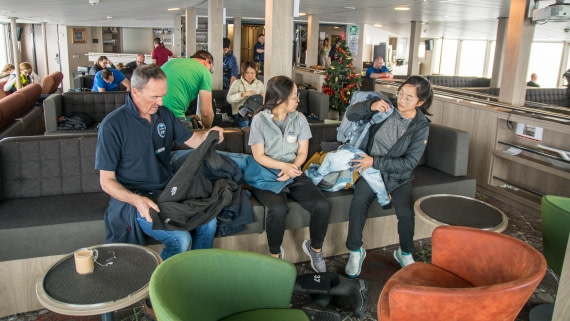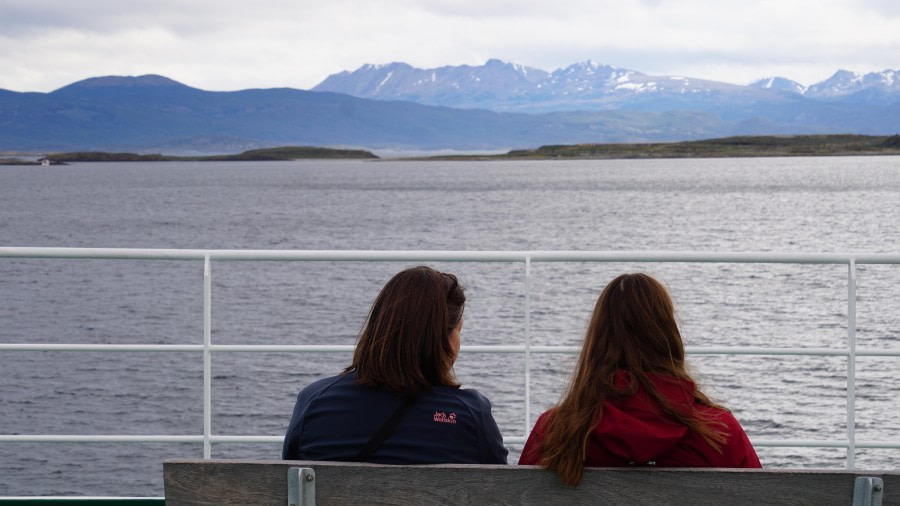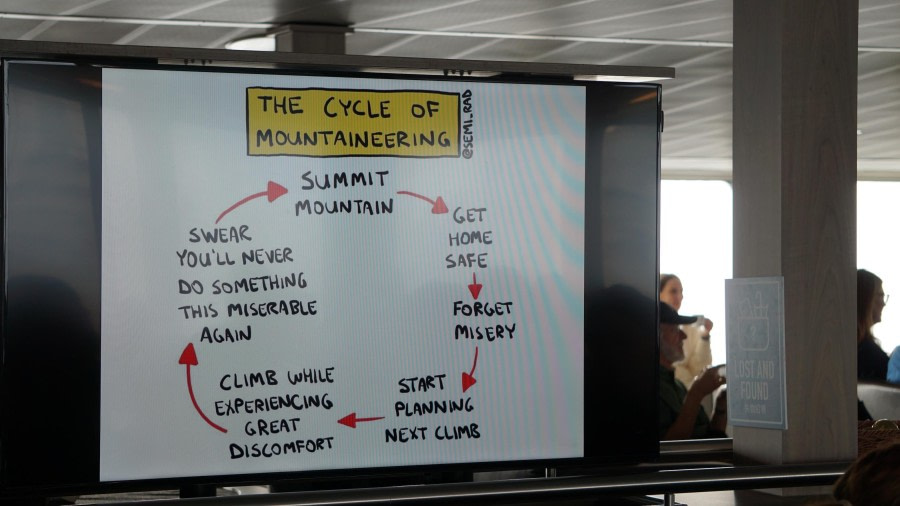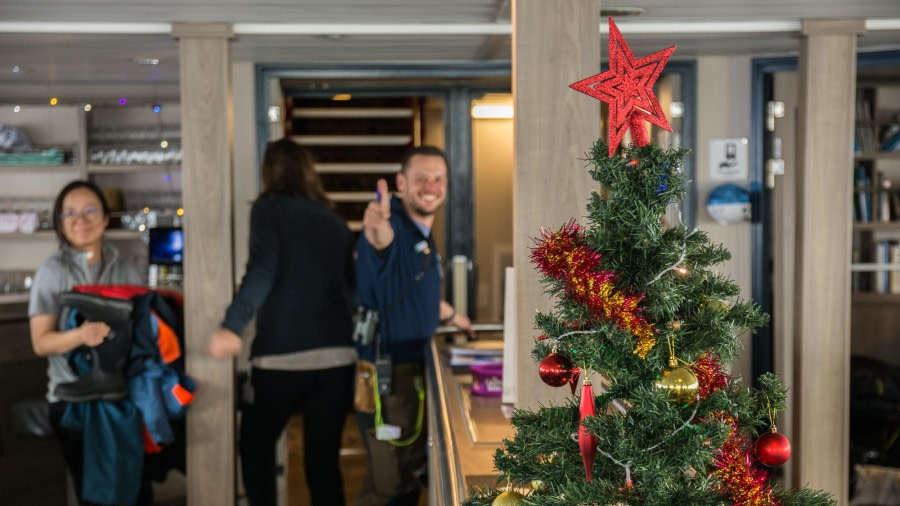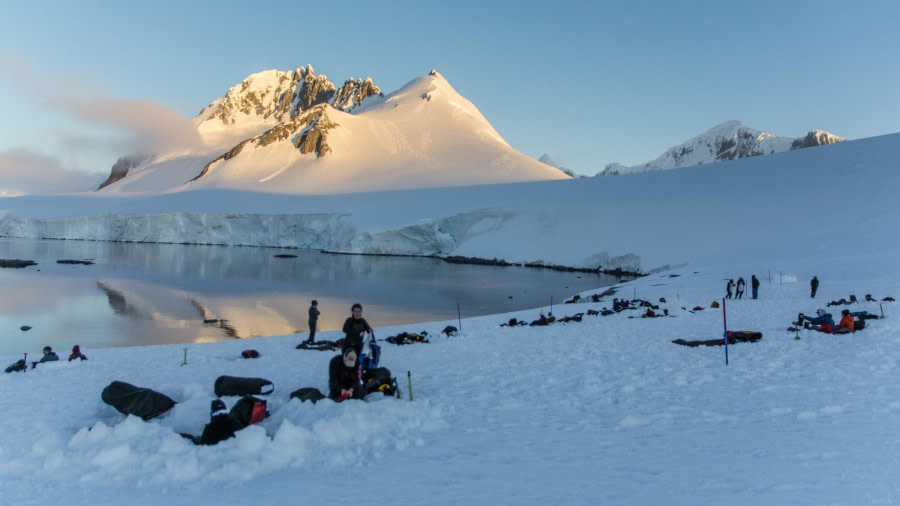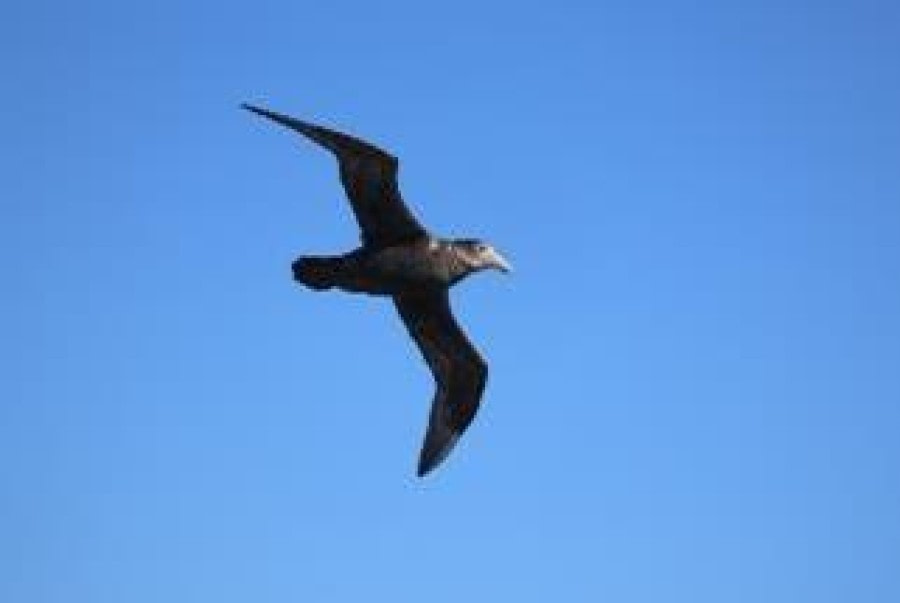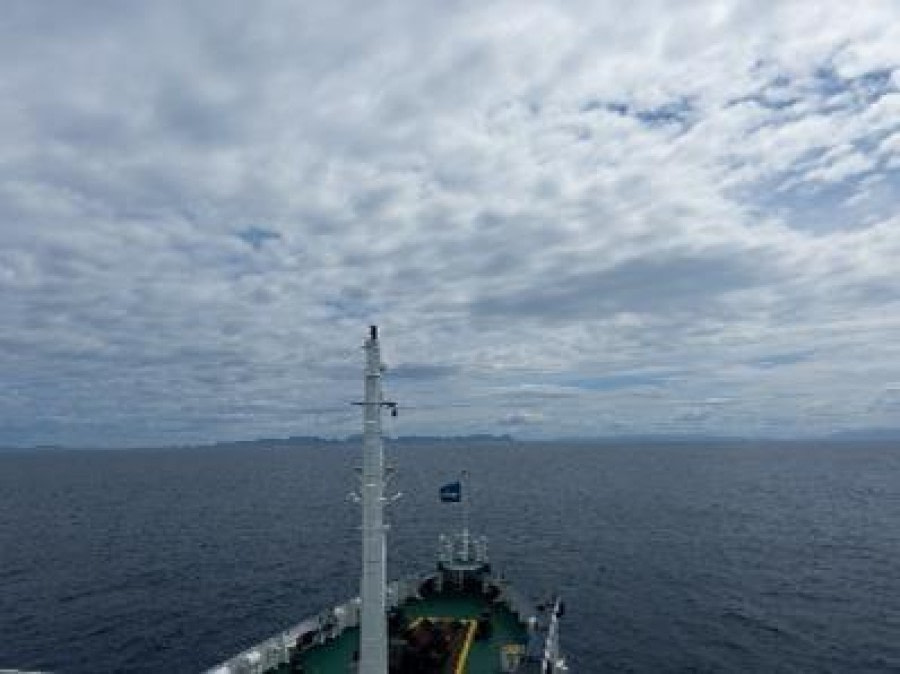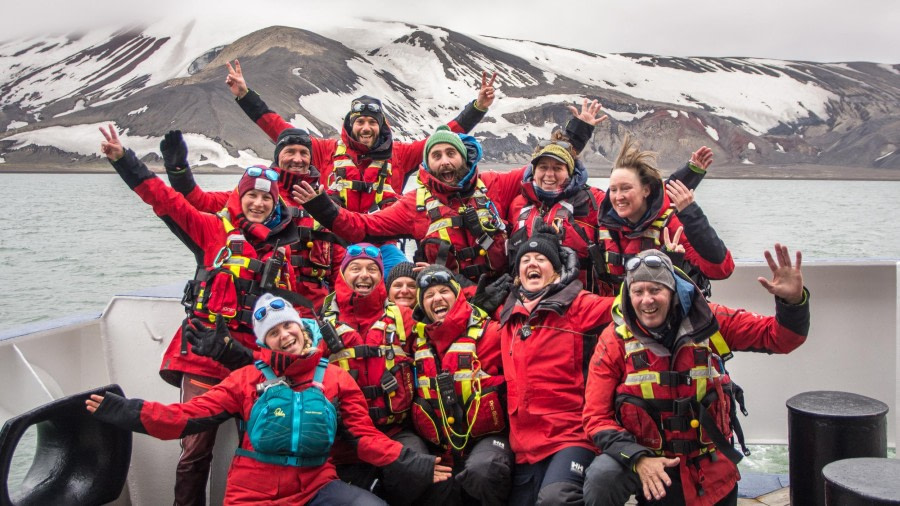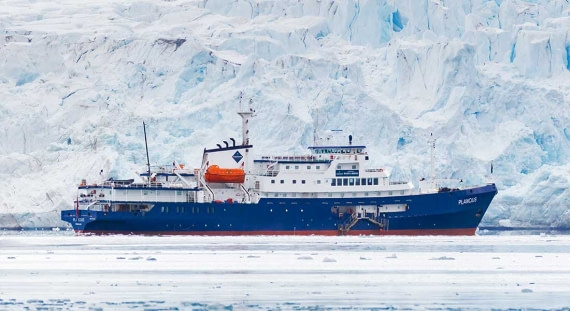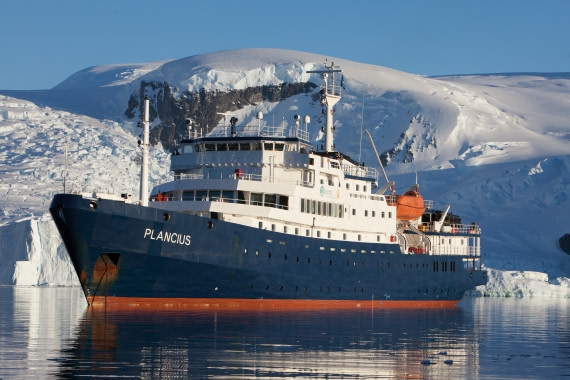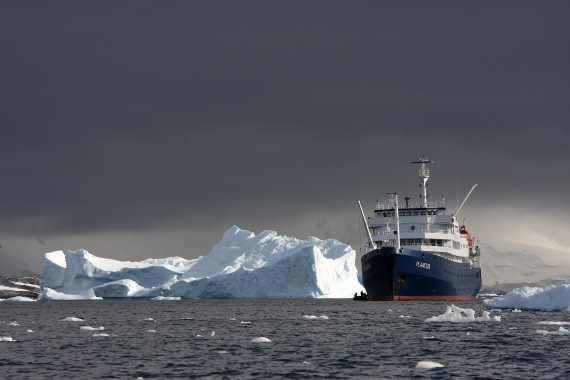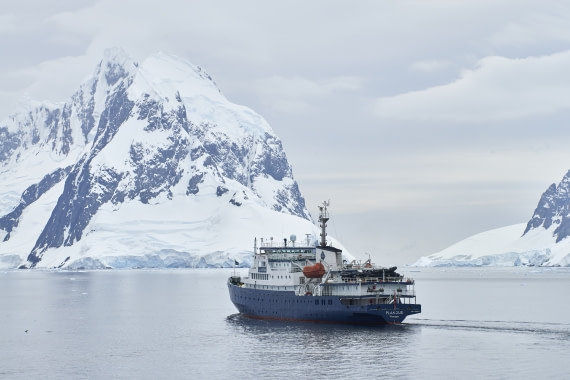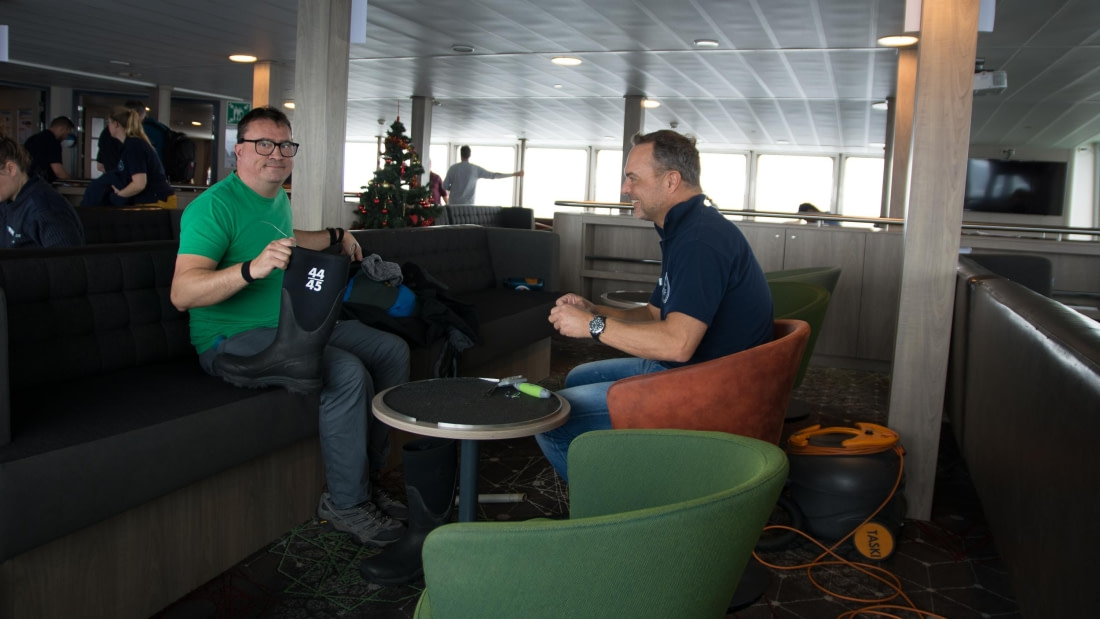| Datum: |
27.12.2023 |
| Positie: |
64°53,3'S / 062°52,4'W |
| Wind: |
Lichte lucht |
| Weer: |
Bewolkt |
| Luchttemperatuur: |
+10 |
De dag begon met zonneschijn door de ramen van onze hutten. We waren klaar voor de volgende dag in Antarctica. We gingen ontbijten, waar de hotelafdeling een heerlijk ontbijt voor ons klaarmaakte. Kort daarna kleedden we ons aan om op pad te gaan voor alle activiteiten.
We gingen naar een plek die Brown Station heette, een Argentijnse onderzoeksbasis die niet bezet was. We hoorden van George dat de oorspronkelijke basis was afgebrand door de dokter van het station, die heel wanhopig naar huis wilde.
We werden in twee groepen verdeeld. Het was een landing en een Zodiac cruise op dezelfde ochtend. Toen we bij het station aankwamen, hadden we het geluk dat we tussen de gebouwen door konden lopen en de heuvel op naar het uitkijkpunt. En daar wachtte ons een verrassing. We mochten naar beneden glijden, erg opgewonden om eindelijk wat sneeuw aan te raken en te genieten van het grappige gedeelte. Omdat er geen wilde dieren in de buurt waren, mochten we (niet alleen in de Zodiac) in de sneeuw zitten en naar beneden glijden. Tijdens de Zodiac cruise zagen we veel wilde dieren, zoals een Dwergvinvis, een bultrug, Weddellzeehonden, Antarctische Aalscholvers, pinguïns, Kaapse stormvogels, Antarctische Stormvogelen en nog veel meer. Het was een geweldige ochtend.
Terug aan boord hadden we honger en waren we klaar voor de lunch. We zeilden door het Aguirre Channel en konden (aan stuurboordzijde) het Chileense station Gonzalez Videla zien liggen. Na de lunch bezochten we het eiland Danco, waarvan de top ongeveer 120 meter boven de zeespiegel ligt.
We konden een kleine wandeling maken rond het eiland en verschillende rookerijen van Ezelspinguïnen zien. We hadden een prachtig overzicht over het Errera Kanaal en konden het volgende eiland, Cuverville, zien liggen. Toen we aankwamen bij de landingsplaats, was deze omringd door grote ijsbergen, een indrukwekkend uitzicht. Toen we vanaf het strand naar boven liepen richting de reddingsvestzakken, moesten we onze sneeuwschoenen meenemen. We trokken onze sneeuwschoenen aan en liepen langzaam omhoog naar de eerste kolonie. Nadat we de eerste kolonie hadden verlaten, moesten we de eerste pinguïnsnelweg oversteken, en pinguïns hebben voorrang.
KAYAKEN
Paradijs Baai 27 AM
Deze beschutte baai is een fantastische plek om per kajak te verkennen. Het met ijs bedekte water maakt navigeren een uitdaging, maar gelukkig zijn alleen de bodems van de gletsjers buiten bereik van de kajakkers. We peddelen langs steile kliffen, waar veel kuifaalscholvers en zelfs een paar kaapse stormvogels leven. We keken toe hoe bergbeklimmers de besneeuwde top boven ons hoofd beklommen en genoten van het prachtige uitzicht rondom de baai. Pinguïns spoelden hun veren rond onze kajaks en we peddelden langs de kust, waar veel nestelende Ezelspinguïnen wonen. Na een prachtige tocht gingen we aan wal voor onze eerste continentale landing.
Danco eiland 27 PM
Net toen we in de Zodiac klommen voor ons kajakavontuur, besloot de wind te gaan waaien. We navigeerden door de sterke wind en stroming in de Zodiac en verscholen ons achter een enorme ijsberg om te schuilen. Hier konden we veilig in de kajaks klimmen om onze reis te beginnen. We bleven dicht bij de kust van Danco Island en gebruikten de hoge kustlijn om ons tegen de wind te beschermen. Toen de wind afnam, maakten we de oversteek naar een klein rotseiland, waar minstens acht zeehonden lagen te slapen. We moesten over een ondiep rif navigeren, wat een kleine uitdaging was, maar we haalden het allemaal. Toen de tijd begon te dringen, maakten we de lange oversteek terug naar Danco en konden we genieten van ongelooflijke uitzichten op rafting pinguïns.
BERGBEKLIMMEN
Bruin Station 27 AM
We genoten van prachtig weer op onze tocht achter onderzoeksstation Almirante Brown. Ons zonnige en luchtige hoogtepunt beloonde het team met een uitzicht vanuit vogelperspectief over Skornttorp Cove. Danco Island 27 PM Een geweldig circuit tegen de klok in naar de top van Danco Island. Onze teams genoten van prachtige panorama's over de top. Tijdens de afdaling werden we getrakteerd op de hoogste van de Ezelspinguïnen kolonies op het eiland en de nooit eindigende "Ezelspinguïn snelweg".
CAMPING
Lefévre Punt, Doumer Eiland
Rond 21:00 uur, direct na het diner, maakten we ons klaar om aan wal te gaan. We werden verwelkomd door Marco en Brian, onze campinggidsen. We kregen onze slaapspullen en een schep en maakten ons klaar om de sneeuwkuilen te graven die onze schuilplaats voor de nacht zouden worden.
De avond was prachtig, met de zon die onderging in het zuidwesten en prachtige oranje en roze tinten wierp op de bergtoppen voor ons. Kort nadat we in onze slaapzakken waren gekropen, hoorden we een paar Bultruggen langs de kust foerageren. Ze bleven zo'n twee uur doorgaan, een unieke Antarctische ervaring.


